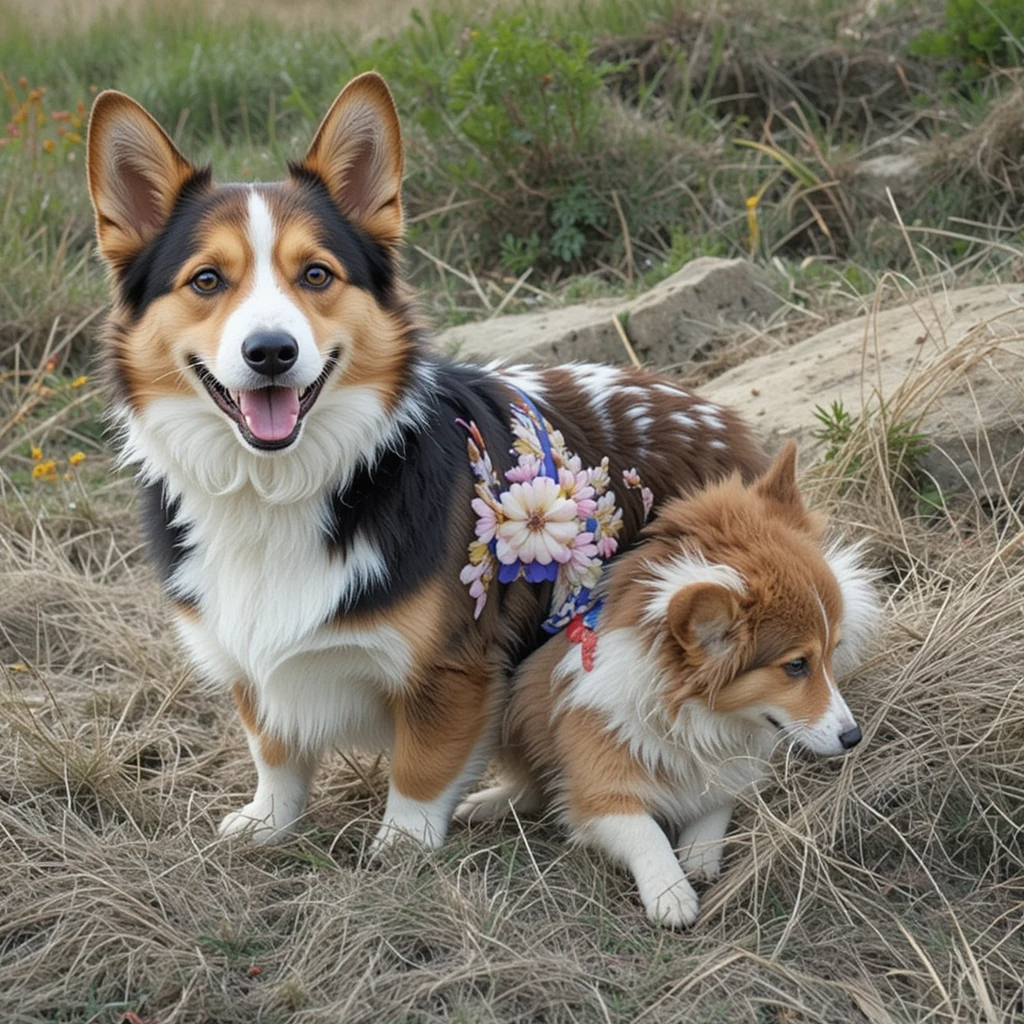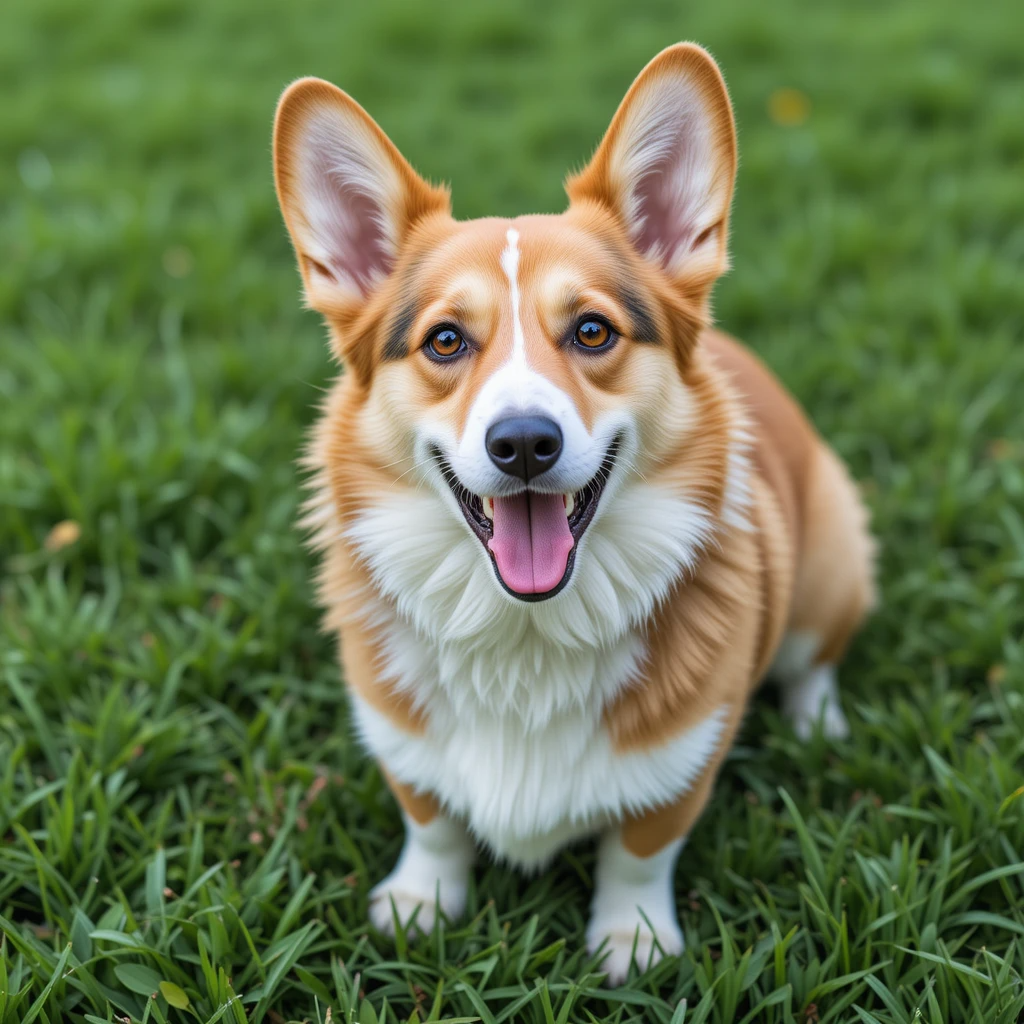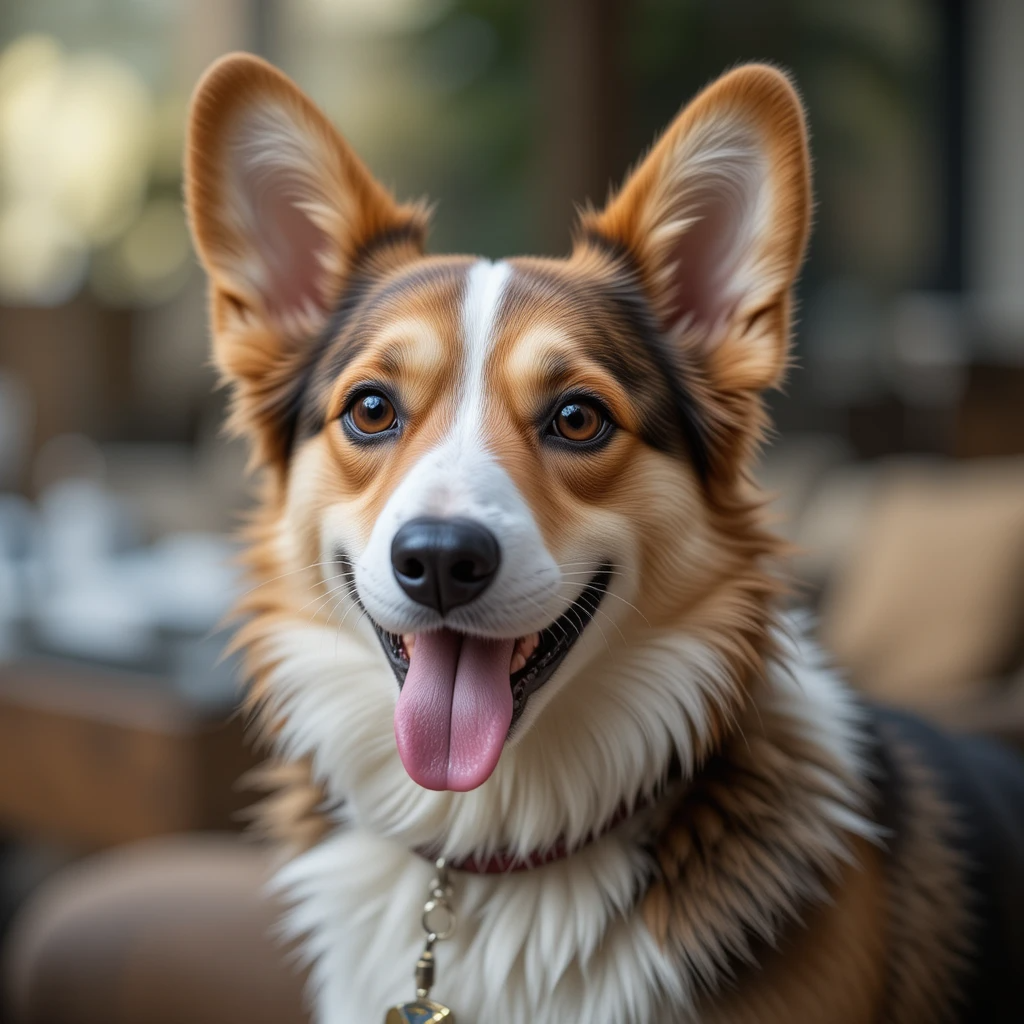The Merle Corgi is a unique breed that catches everyone’s attention with its adorable and vibrant coat patterns. This dog is famous for its blue merle fur, which gives it a one-of-a-kind look. Its short legs and active nature make it perfect for herding and family life. Merle Corgis are not just intelligent but also incredibly loyal, offering companionship and a playful attitude that brightens up any household. Though their thick coat may require some grooming, it’s an easy-to-train and affectionate companion.
If you’re thinking of adding a Merle Corgi to your family, remember that these dogs are known for their energetic and friendly nature. They’re well-suited for both indoor and outdoor activities, keeping their owners busy with agility exercises and obedience training. As a family-friendly dog, they thrive with socialization and are excellent with children and other pets. Their health is generally strong, though it’s important to monitor their diet and overall care. A Merle Corgi’s loyalty and energy make it a fantastic addition to any home, bringing joy with every step.
Table of Contents
Breed Overview
The blue merle Corgi is a special color variation officially recognized for this breed. Aside from the striking unique markings, these dogs are identical to other types of Corgis in terms of appearance and personality. The blue merle Corgi shares the same traits, including its small size, short legs, and energetic nature. What makes them stand out is their one-of-a-kind coat, which adds an extra flair to the well-loved Corgi look.
If you’re interested in a blue merle Corgi, it’s important to understand that while their color is different, their behavior and care needs are similar to any other Corgi. We’ve highlighted everything you need to know about these dogs, so you can decide if the blue merle variation is the right choice for your family. Whether you’re a first-time Corgi owner or an experienced dog lover, these dogs are sure to catch your attention with their distinctive looks and friendly demeanor.

The Earliest Records of Blue Merle Corgis in History
The Pembroke Welsh Corgi and the cardigan Welsh Corgi both have a long history, dating back to the 10th century. While people often believe the cardigan Welsh Corgis are slightly older than the Pembroke, both breeds were bred for similar purposes. These farm dogs were invaluable with their short legs, which helped them perform various tasks around the farm. They were skilled in rodent control and, thanks to their versatility, could even herd cattle without getting in the way of their hooves.
As these breeds evolved over time, the blue merle variation began to emerge, gaining attention for its striking appearance. The earliest records of blue merle Corgis suggest that these unique markings appeared naturally among these already useful farm dogs. The distinctive coat pattern only added to their charm and usefulness on the farm.
How the Blue Merle Corgi Gained Popularity
The Corgi first gained popularity in Wales because of their versatility and usefulness on the farm. Their small size allowed them to easily hunt rodents, while their intelligence and determination made them great at herding larger animals like cattle. During the 1850s, Corgis were very prevalent on farms, but their role began to shift as Welsh farmers started raising sheep, which required dogs with longer legs. As a result, the Corgi gradually fell out of favor and was replaced by Border Collies on many farms across Wales.
However, while Corgis were no longer the go-to farming dogs, they still held a special place in the United Kingdom. Over time, modern Corgis found a new purpose as show dogs and companion dogs, with the blue merle Corgi gaining attention for its unique coat and charming personality. Though their role in farming has diminished, the blue merle Corgi continues to captivate many, thanks to their versatility and undeniable appeal.
Formal Recognition of the Blue Merle Corgi
The Pembroke Welsh Corgi is one of the earliest dog breeds to be officially recognized by the American Kennel Club (AKC), which was formed in 1884. In 1934, the AKC officially recognized the Pembroke Welsh Corgi as a breed, followed by the Cardigan Welsh Corgi in 1935. Over time, the blue merle color marking became an officially recognized color pattern for the breed, adding to the variety of markings that come standard with Corgis. The blue merle variation does include some white markings throughout, making it even more unique.
When choosing a blue merle Corgi, you’ll find a lot of variety in the markings. Whether you already know you want a blue merle, there’s still a lot of options to choose from, showcasing how diverse the breed can be while staying true to its recognized standards. These officially recognized color patterns help define the blue merle Corgi as a special and well-loved version of the Corgi breed.

Top 5 Unique Facts About the Blue Merle Corgi
There are many interesting facts about the blue merle Corgi that make it stand out from the rest. We’ve picked five of our favorites to share with you. These Corgis have a distinctive blue merle coat pattern, which includes unique markings that set them apart. Unlike other Corgis, their markings can vary, giving each one a different and special appearance. Whether you’re a fan of Corgis or not, the blue merle Corgi’s beauty and uniqueness are undeniable.
What makes the blue merle Corgi even more fascinating is its intelligence and versatility. These dogs are known for being energetic and friendly, making them perfect companions. Whether they’re working on the farm or relaxing at home, the blue merle Corgi is always a joy to be around. With its interesting facts and charming personality, the blue merle Corgi remains a favorite for many.
1. There Are Two Distinct Corgi Breeds
If you’re a true Corgi enthusiast, you probably already know about the two distinct breeds of Corgis: the Pembroke Welsh Corgi and the Cardigan Welsh Corgi. These two breeds share a lot of similarities but also have some unique characteristics. While they both fall under the Corgi umbrella, there are differences that make each breed special in its own way. So, when people refer to a “Corgi,” they could be talking about either one of these breeds.
The Pembroke Welsh Corgi and the Cardigan Welsh Corgi are both well-loved, but they have some differences that set them apart. For example, Pembroke Corgis are known for their smaller size and docked tails, while Cardigan Corgis have larger, rounded ears and a fuller, bushier tail. Despite these differences, both breeds are equally loyal, energetic, and friendly. So, when you see a Corgi, you might just be seeing one of these two distinct breeds!
2. Corgis Come From Wales
Corgis originally came from the southern portion of Wales, where they were bred as farming dogs. They played a vital role on farms, helping with various tasks like herding livestock and controlling pests. Interestingly, the Pembroke Welsh Corgis were specifically from the southern portion of Wales, while the Cardigan Welsh Corgi originated in the more northern region of the country. The two breeds, while both Corgis, have distinct origins based on the area in which they were raised.
Even though they came from different regions, both breeds share the same hardworking nature and were used on farms for similar tasks. The Pembroke Welsh Corgi and Cardigan Welsh Corgi carry with them a deep connection to the land and work ethic of Wales, making them an essential part of the country’s farming history.
3. Merle Corgis Are Expensive and Rare
Merle Corgis are among the rarer color patterns you’ll find in this breed. While it’s possible to find a blue merle Corgi, these dogs are not as common as other types of Corgis. Because of their rarity, you can expect to spend anywhere from $1,000 to $5,000 for a blue merle Corgi puppy. This price range reflects their special color pattern, which adds to their appeal and uniqueness.
Finding a merle Corgi can be a bit challenging due to its rarity, making them even more desirable for dog lovers who are looking for something distinctive. Despite their higher cost, many people are willing to invest in a blue merle Corgi for its beautiful appearance and loyal, energetic personality.
4. Corgis Were Once Rodent Control Dogs
In the past, Corgis were not just working dogs but also excellent hunting dogs. Their main job on farms was to help control rodents, which were a big problem for farmers. While cats usually get all the credit for taking care of these pests, Corgis played a key role as well. They would often chase down and catch rodents, making them valuable helpers on the farm.
Although Corgis are now more often known as companion dogs, their history as rodent control dogs highlights their hunting and working nature. This background shows how versatile these dogs were in the past, serving a practical purpose beyond just being cute and lovable pets.
5. Corgis Used to Herd Cattle
Corgis are known for their versatility, which is why they were used for more than just hunting small animals like mice and rats. These small but strong dogs also played an important role on farms by helping farmers herd cattle. With their quick movements and energetic nature, Corgis were the perfect dogs for guiding and managing livestock. It’s amazing how teams of these little dogs could work together to move such large animals.
Their ability to herd cattle made them incredibly useful farm additions. Even though they are now mostly seen as companion animals, their history as hardworking farm dogs shows just how much Corgis contributed to farm life. Their hardworking spirit and versatility made them invaluable helpers on the farm.

Does the Blue Merle Corgi Make a Good Pet?
The blue merle Corgi is just like any other Pembroke Welsh Corgi when it comes to being a pet. They are affectionate, personable, and make great companions. These dogs do exceptionally well with other dog breeds and can be very friendly towards them. They are generally lovable and easygoing but do have some unique traits due to their natural herding instincts. Because of these instincts, you may need to be careful when it comes to small pets or children in the household.
With a little bit of training and persistence, a blue merle Corgi can be taught to avoid herding people or animals they shouldn’t. While Corgis are typically not as needy as other breeds, they still enjoy attention. They may not require constant attention, but they do enjoy being part of the family and interacting with their owners. This combination of traits makes the blue merle Corgi a perfect choice for a loving, active, and well-adjusted family pet.
Closing Thoughts
If you’re thinking about getting a blue Merle Corgi, you’re sure to get an adorable dog with a lot of charm. Their unique color marking makes them stand out, and it’s easy to see why people can’t help but swoon over them. But it’s not just the looks that make them special – they come with a rich history that adds to their appeal. Knowing more about their background and personality helps you truly appreciate everything that these dogs bring to the table.
After learning about their history and quirks, you’ll see why the blue Merle Corgi is more than just a pretty face. These dogs offer much more than their stunning appearance, and their unique personalities make them wonderful companions for anyone who’s ready to take on the responsibility of owning such a special breed.

